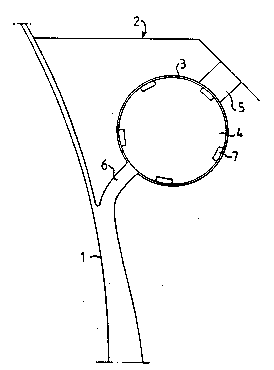Some of the information on this Web page has been provided by external sources. The Government of Canada is not responsible for the accuracy, reliability or currency of the information supplied by external sources. Users wishing to rely upon this information should consult directly with the source of the information. Content provided by external sources is not subject to official languages, privacy and accessibility requirements.
Any discrepancies in the text and image of the Claims and Abstract are due to differing posting times. Text of the Claims and Abstract are posted:
| (12) Patent Application: | (11) CA 2114130 |
|---|---|
| (54) English Title: | DEVICE FOR DEWATERING A PULP SUSPENSION |
| (54) French Title: | DISPOSITIF DE DESHYDRATATION DE PATE EN SUSPENSION |
| Status: | Deemed Abandoned and Beyond the Period of Reinstatement - Pending Response to Notice of Disregarded Communication |
| (51) International Patent Classification (IPC): |
|
|---|---|
| (72) Inventors : |
|
| (73) Owners : |
|
| (71) Applicants : |
|
| (74) Agent: | SMART & BIGGAR LP |
| (74) Associate agent: | |
| (45) Issued: | |
| (86) PCT Filing Date: | 1992-06-25 |
| (87) Open to Public Inspection: | 1993-03-04 |
| Availability of licence: | N/A |
| Dedicated to the Public: | N/A |
| (25) Language of filing: | English |
| Patent Cooperation Treaty (PCT): | Yes |
|---|---|
| (86) PCT Filing Number: | PCT/SE1992/000469 |
| (87) International Publication Number: | SE1992000469 |
| (85) National Entry: | 1994-01-24 |
| (30) Application Priority Data: | ||||||
|---|---|---|---|---|---|---|
|
2114130 9304234 PCTABS00020
A device for dewatering a pulp suspension, comprising an
open-work movable surface (1) for forming and dewatering a pulp web. In
an inlet (2) for the pulp suspension to the movable surface (1), a
cylindric chamber (3) is located which encloses a rotatable
cylindric rotor (4), the shaft of which extends transverse to the
flow direction of the pulp. The rotor (4) is provided on its surface
with a plurality of crosswise arranged channels (7). The pulp is
forced to flow from an inlet (2) in the chamber (3) through the
channels (7) to an outlet (6) located on the opposite side of the
chamber (3).
Note: Claims are shown in the official language in which they were submitted.
Note: Descriptions are shown in the official language in which they were submitted.

2024-08-01:As part of the Next Generation Patents (NGP) transition, the Canadian Patents Database (CPD) now contains a more detailed Event History, which replicates the Event Log of our new back-office solution.
Please note that "Inactive:" events refers to events no longer in use in our new back-office solution.
For a clearer understanding of the status of the application/patent presented on this page, the site Disclaimer , as well as the definitions for Patent , Event History , Maintenance Fee and Payment History should be consulted.
| Description | Date |
|---|---|
| Inactive: IPC from MCD | 2006-03-11 |
| Time Limit for Reversal Expired | 1995-12-25 |
| Application Not Reinstated by Deadline | 1995-12-25 |
| Deemed Abandoned - Failure to Respond to Maintenance Fee Notice | 1995-06-26 |
| Inactive: Adhoc Request Documented | 1995-06-26 |
| Application Published (Open to Public Inspection) | 1993-03-04 |
| Abandonment Date | Reason | Reinstatement Date |
|---|---|---|
| 1995-06-26 |
Note: Records showing the ownership history in alphabetical order.
| Current Owners on Record |
|---|
| SUNDS DEFIBRATOR INDUSTRIES AKTIEBOLAG |
| Past Owners on Record |
|---|
| ALF LINDSTROM |